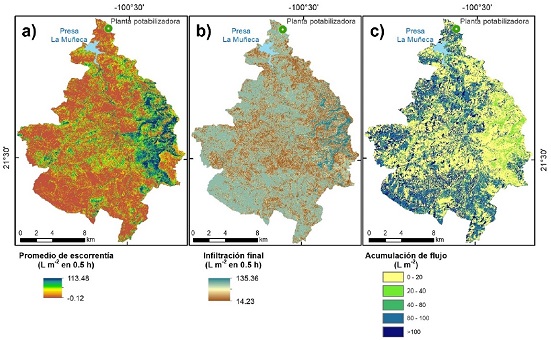Funcionamiento ecohidrológico de una cuenca con obras secundarias de trasvase
DOI:
https://doi.org/10.28940/terra.v41i0.1678Palabras clave:
acumulación de escorrentía, inter-parches, parches, simulaciones de lluviaResumen
Para movilizar el agua de una cuenca a otra se han realizado obras hidráulicas como los trasvases que junto con los trabajos asociados a estos han afectado múltiples factores ambientales y sociales, entre otros. En este estudio se evaluaron los efectos de trasvases en la estructura y funcionamiento ecohidrológico de la cuenca de la presa de La Muñeca localizada en el municipio de Tierra Nueva, San Luis Potosí. Se realizaron transectos de 50 m de longitud siguiendo el método Landscape Function Analysis (LFA) para medir características de la estructura del paisaje en parches con diferente cobertura vegetal y se elaboró un mapa de la cobertura del suelo. A partir de simulaciones de lluvia en estos parches e inter-parches se determinó el promedio de escorrentía y la tasa de infiltración final, que fueron mapeadas para modelar la distribución espacial de la acumulación de escorrentía. El modelo de regresión usado para mapear el porcentaje de la cobertura del suelo fue significativo (P < 0.0001). Hacia la zona oeste del área de estudio se generó mayor escorrentía por ser un área con menor cobertura del suelo, mientras que en la zona este se presentó la mayor acumulación de escorrentía y sedimentos, por encontrarse una mayor proporción de parches de cobertura densa. En general, los resultados comprueban la viabilidad de utilizar métricas, simulaciones de lluvia y modelado espacial para evaluar el funcionamiento ecohidrológico y así determinar la acumulación de escorrentía a diversas escalas del paisaje.
Descargas
Publication Facts
Reviewer profiles N/D
Author statements
- Academic society
- Terra Latinoamericana

















